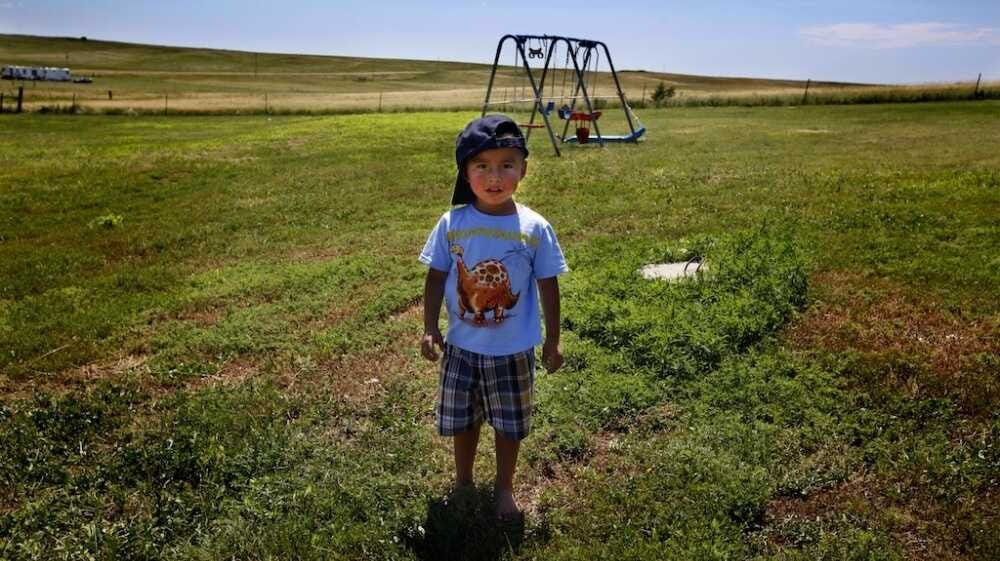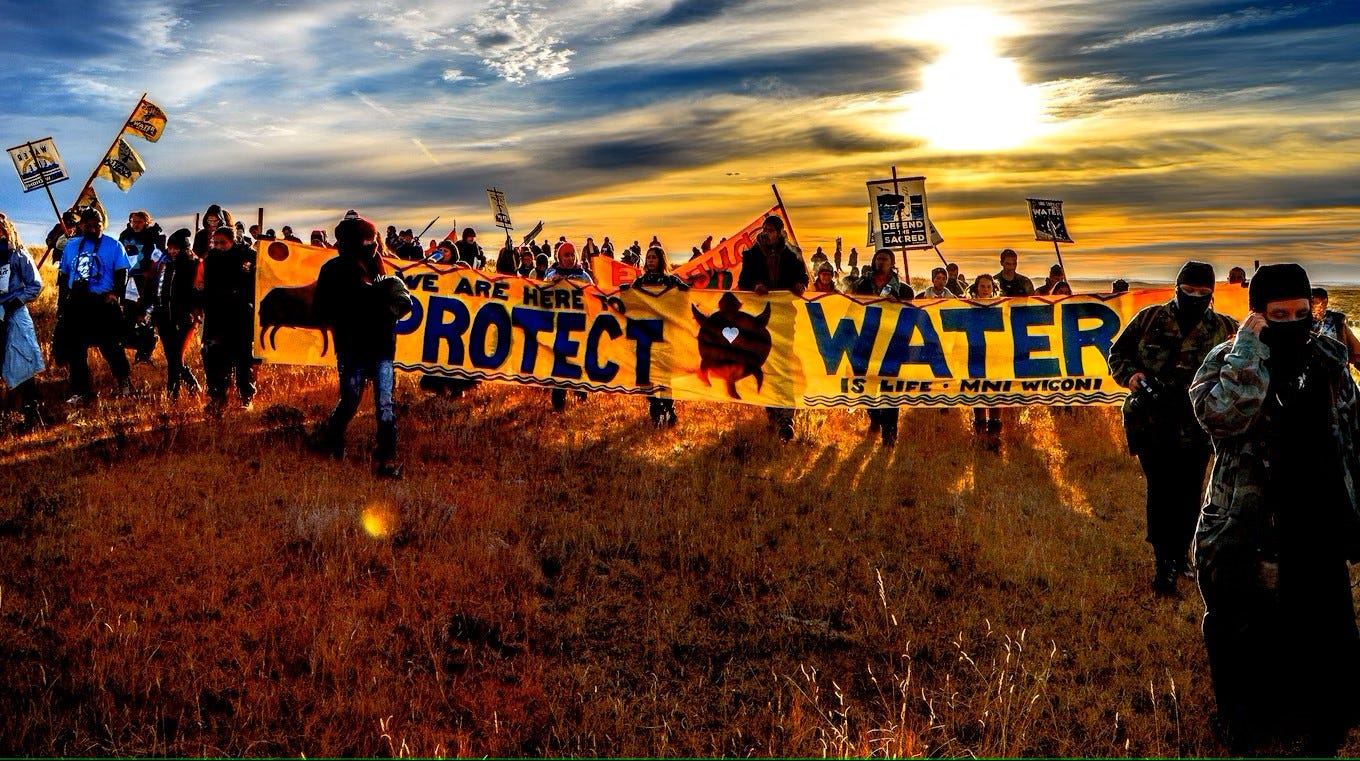One of my great honors in life has been to be part of the Lakota People’s Law Project. For about 15 years, on and off I have worked with a large team of student interns from the University of California Santa Cruz, activists, attorneys, and indigenous leaders. My role was to be part of a community outreach effort to build public support for the Lakota. Our first project was to support Lakota leaders’ efforts to prevent the illegal taking of Lakota children from their homes and severing the parental rights of their mothers and fathers. The State of South Dakota warehoused these children in massive facilities and the suffering children were given psychoactive medication to calm them. Many were placed in foster homes where they were abused. When the young people aged out, they were taken to a parking lot and released without knowing where they were from or where they should go.
Parents and family members searched for them but were blocked by officials, saying that the records were confidential or that their parental rights had been surrendered. For many young people, this experience was a fast lane to alcohol, drug abuse, and crime. One young man was searched for his mother for 8 years. When he found her, she had 6 months left to live. The state had poverty classified as child neglect. When grandmothers wanted to have custody, they needed to show that they had a separate bedroom for each child and suitable middle-class accommodations. One grandmother fulfilled these requirements, but the state still took the children because she had had a DUI citation 25 years prior. The state was receiving $100 million per year in federal funds for the children, turning them into a significant source of revenue. Adoptions were arranged. Children were “sold” for about $40,000 to adoptive parents, who paid exorbitant legal fees.
The country became aware of this travesty when NPR aired its 2011 award winning documentary Native Foster Care: Lost Children, Shattered Families. Changing this public policy of structural evil took over 11 years. However, it was only the latest chapter in the attempt to kill Lakota culture and decimate the survivors.
The history of the Lakota, Nakota, and Dakota peoples, the Oyate, and their consistent attempts to push back against overwhelming cultural, political, and economic forces is documented in a 2021 award winning documentary film, Oyate. It is available on YouTube, Vimeo and various streaming services. Oyate weaves Lakota history around their current struggle on the Standing Rock Reservation to protect their land and water from the Dakota Access Pipeline (DAPL). This pipeline was designed to transport crude oil from the Bakken Fields of North Dakota to the Mississippi Delta. It was originally planned to cross a narrow tributary of the Missouri River near Bismarck, North Dakota but residents objected to the potential hazard that would endanger their lands and water supplies. The pipeline was then rerouted farther south to the Standing Rock Reservation where it would be placed under a much wider stretch of the Missouri River. The Army Corps of Engineers approved the construction without the required environmental impact report. Several peaceful non-violent protests were brutally put down by state law enforcement, even though the Lakota were protesting on their own land. Many other indigenous groups and large numbers of people from all over the country joined the demonstrations.
Leaders and participants in the protest were charged with many crimes and were threatened with long prison terms for allegedly inciting a riot. The Lakota People’s Law Project was successful in getting the charges dropped over a period of two years of intense legal battles. As it neared its end, the Obama Administration’s finally took a a short lived position against DAPL in favor of the Waterkeepers. It was only a matter of months before the Trump Administration reversed everything when industry lobbyists took over major positions in the federal government.
The Lakota and many other indigenous peoples are now leading the way to sustainably living on the land and moving away from fossil fuels. Indigenous people point to their history over thousands of years of living in a more cooperative and mutually sustainable balance with nature. They consider the mountains, valleys, and rivers to be sacred. They are having more success in protecting their people from the poisoning of their lands and water sources from mining, oil drilling, and deforestation. It would be one thing if the Lakota and other indigenous tribes benefited from this depredation, but they never have. When gold was discovered in the Black Hills by General George Armstrong Custer, this vast area and its riches were taken from the tribes in violation of the Treaty of Fort Laramie.
After the systematic extermination of the buffalo, the tribes could only obtain food and shelter on reservations set up by the US Army. These reservations would become the inspiration for the South African government to set up Bantustans and copy the American apartheid system. The result was to throw the people into abject subjugation. As their of way of life disintegrated and entire generations were taken from their homes and put into boarding schools operated by churches, the society collapsed into destitution, hunger, drug and alcohol addiction, and family violence. Forcefully deprived of their language, religion, and means of support, depression, anxiety, and violence revealed a collapse of the soul. Young women even today are being “disappeared,” forced into prostitution, or trafficked.
Femicide is still a major problem for Lakota communities near the “man” camps that house mineral extraction workers. This remains an ongoing struggle in the halls of Congress. The Oyate documentary focuses on this crisis toward the end of the film as their next objective. This struggle is being spearheaded by a new generation of Lakota women.
The story of the Lakota and other indigenous people and the beginning of their restoration is a story of the amazing resilience of the human spirit. The problems are still severe with the reservations. Lakota attorney and activist, Chase Iron Eyes, describes life on the Oglala Sioux Reservation and others as “slow motion genocide,” as people live in grinding poverty with annual household incomes of less than $5,000. He points out that this affront to human rights and dignity would not happen if only a fraction of their treaty rights had been honored.
What is most remarkable is that the Lakota are not weaving a narrative of victimization but one of resurgence and dignity worthy of an ancient people. Most importantly, the warrior tribes of the great plains have adopted a warfare of resistance, non-violence, and forward thinking. The way ahead is clearly difficult, as the Lakota continue to face impossible odds. The wounds of conquest and near extermination have left their mark deeply within the psyche and behavior of many of the people. Yet, the struggle continues, and new generations have been given a sense of hope and are leading the way for others to reclaim themselves and the environment.
I would like to thank all of you for your support and encouragement. When you get a moment - or even right now - click on this link to make your donation to the Lakota People’s Law Project.





